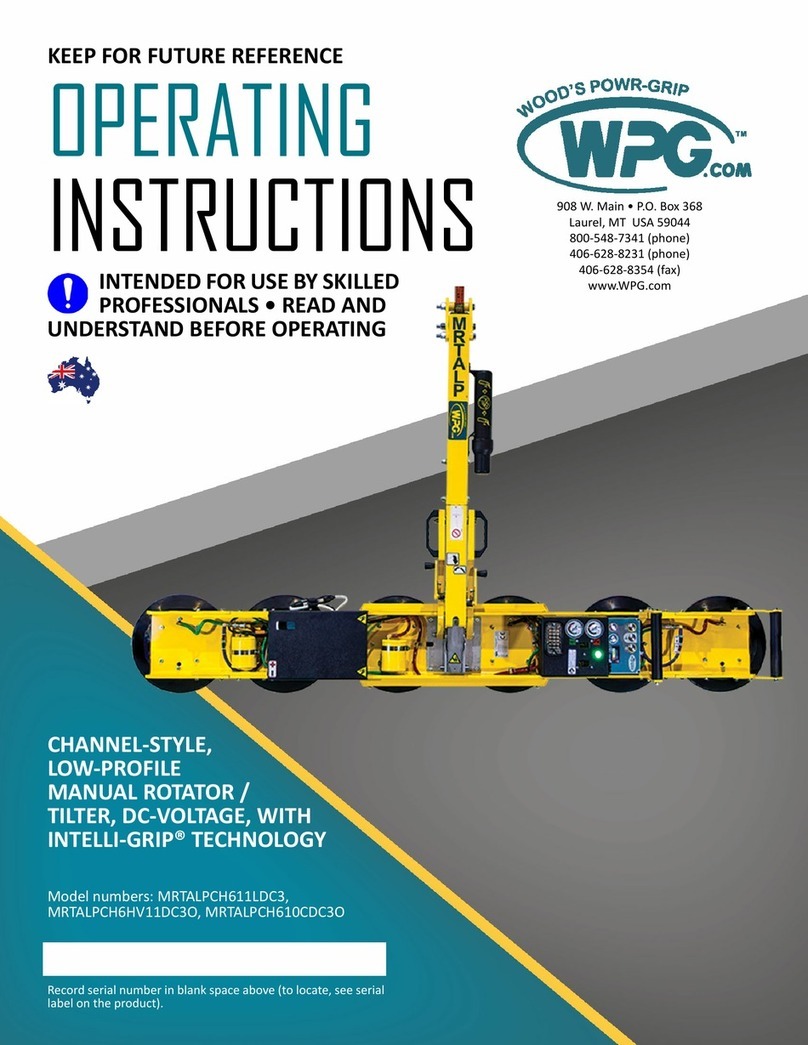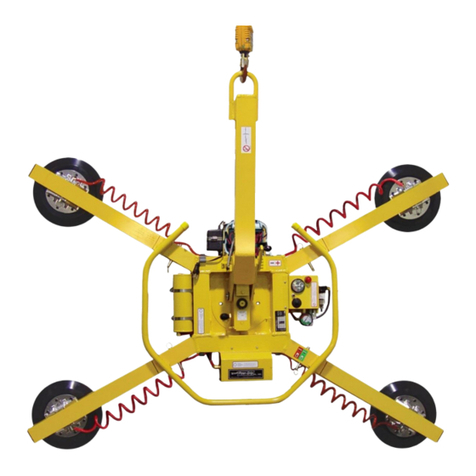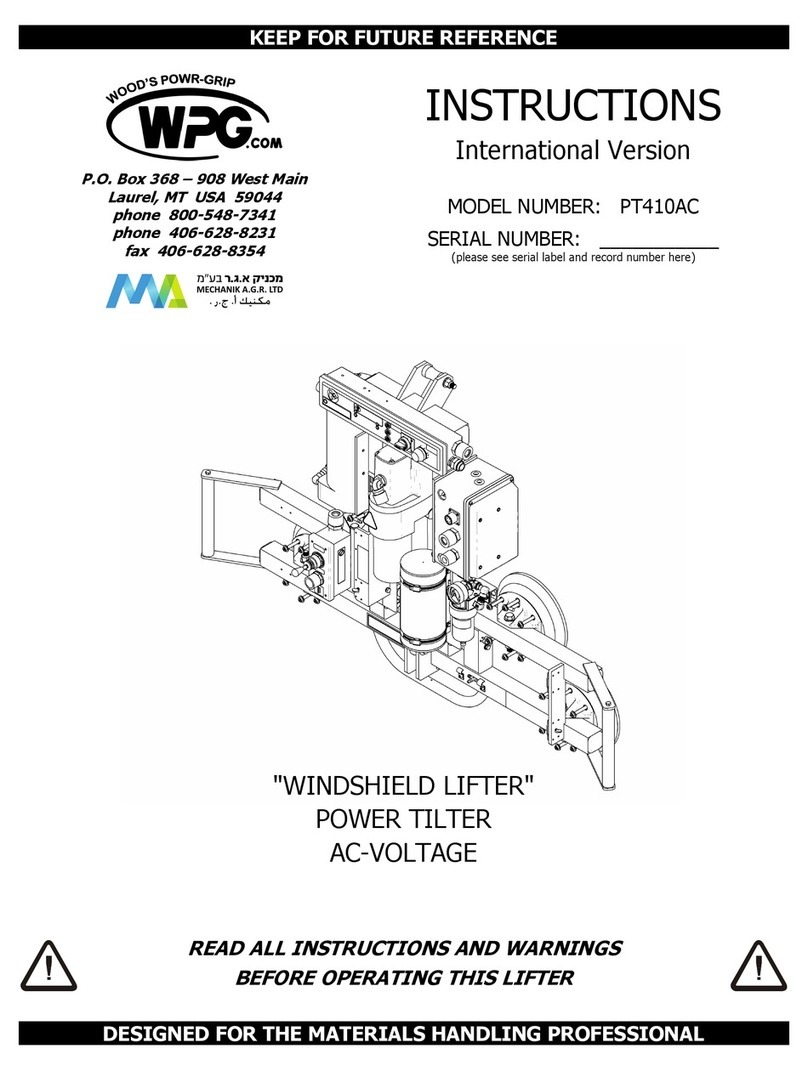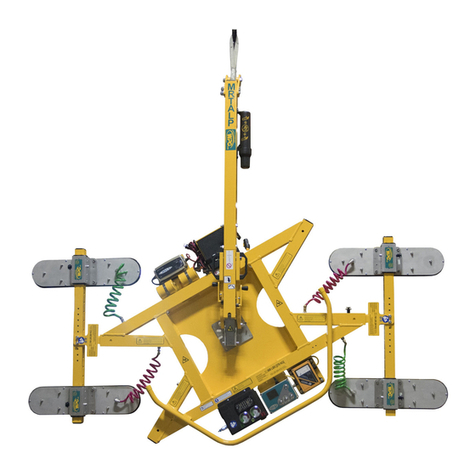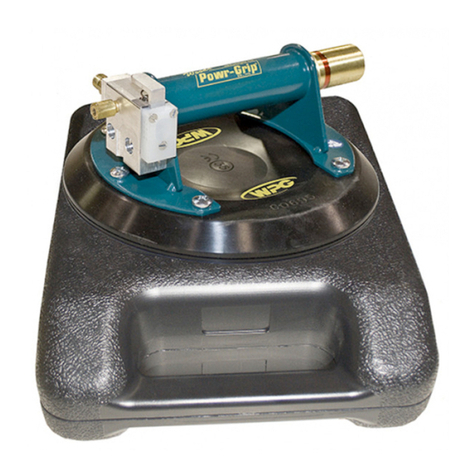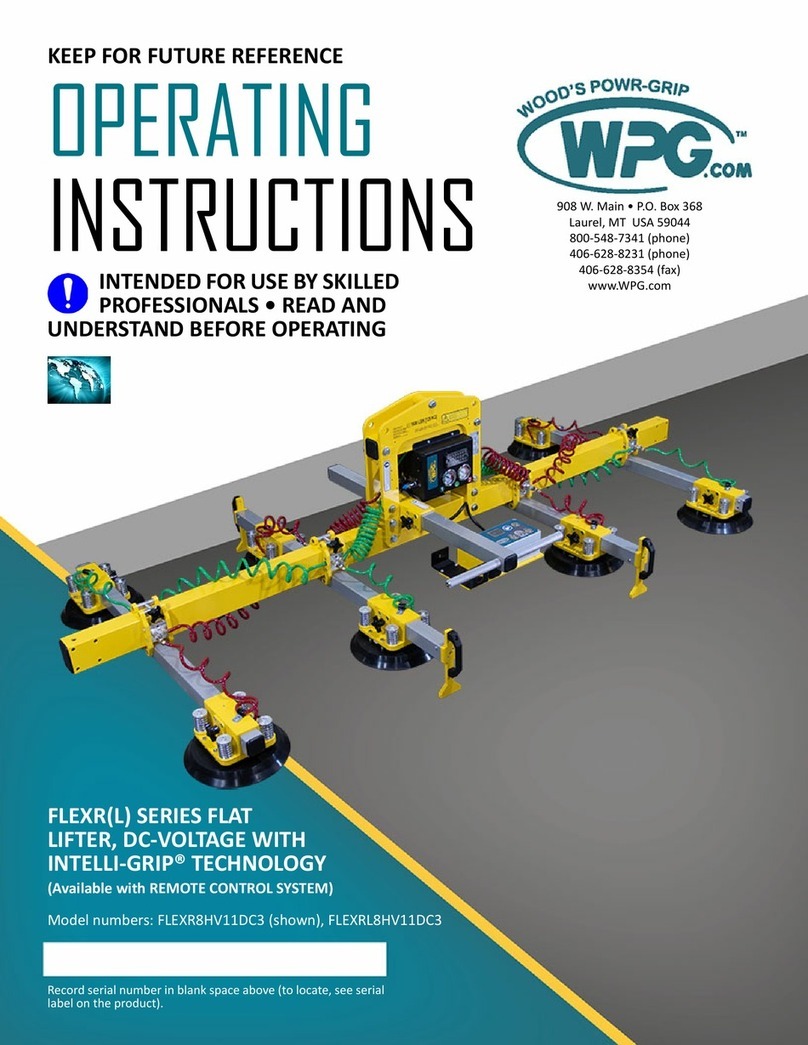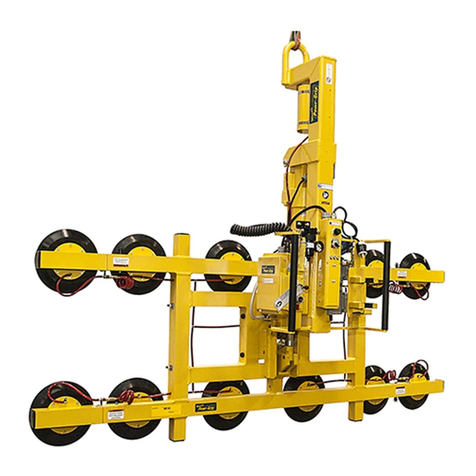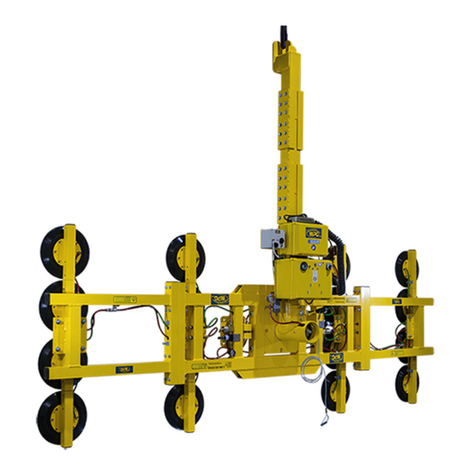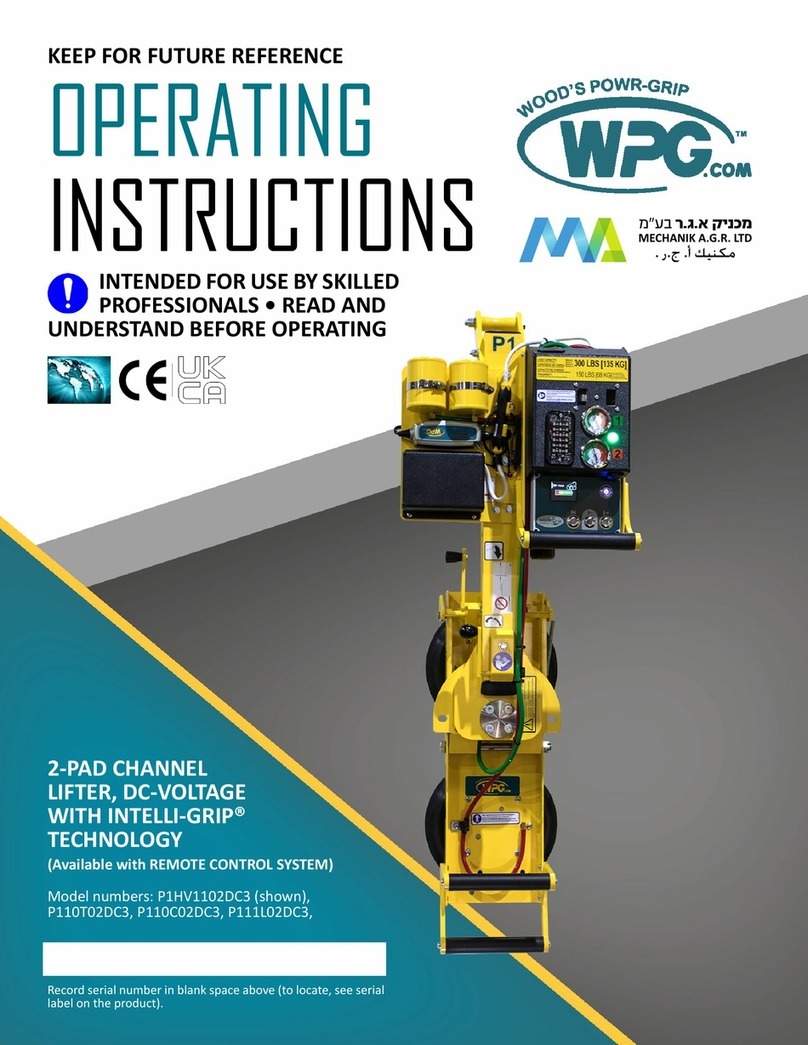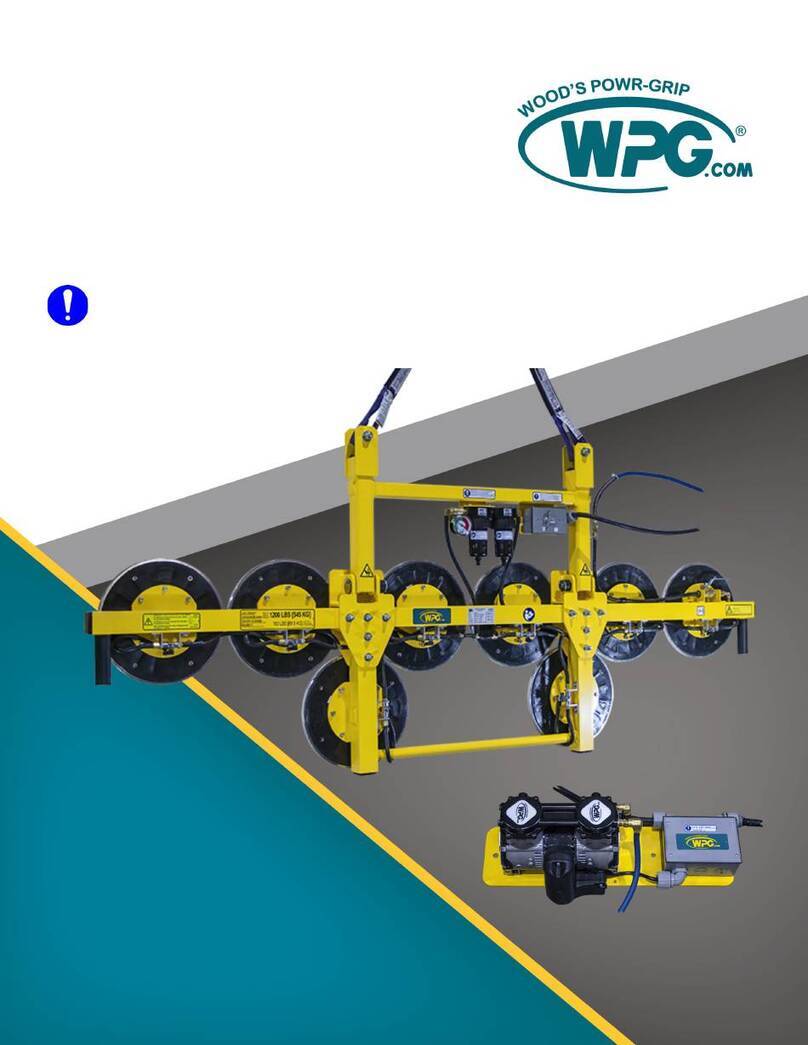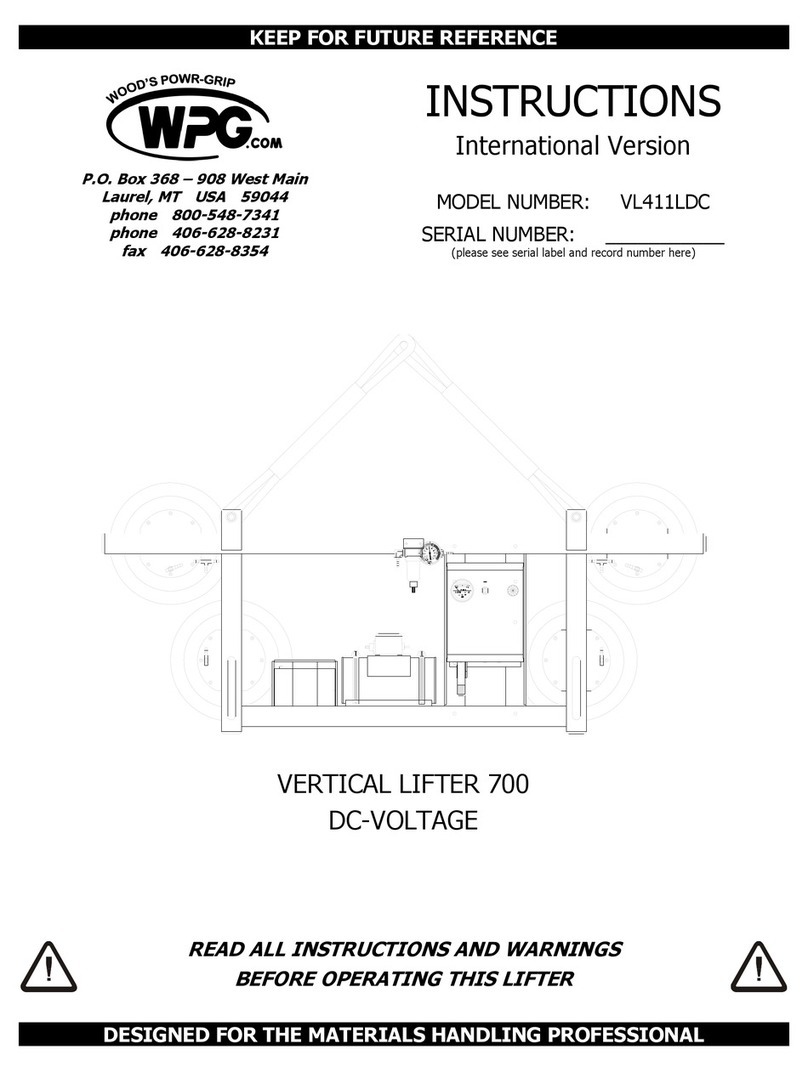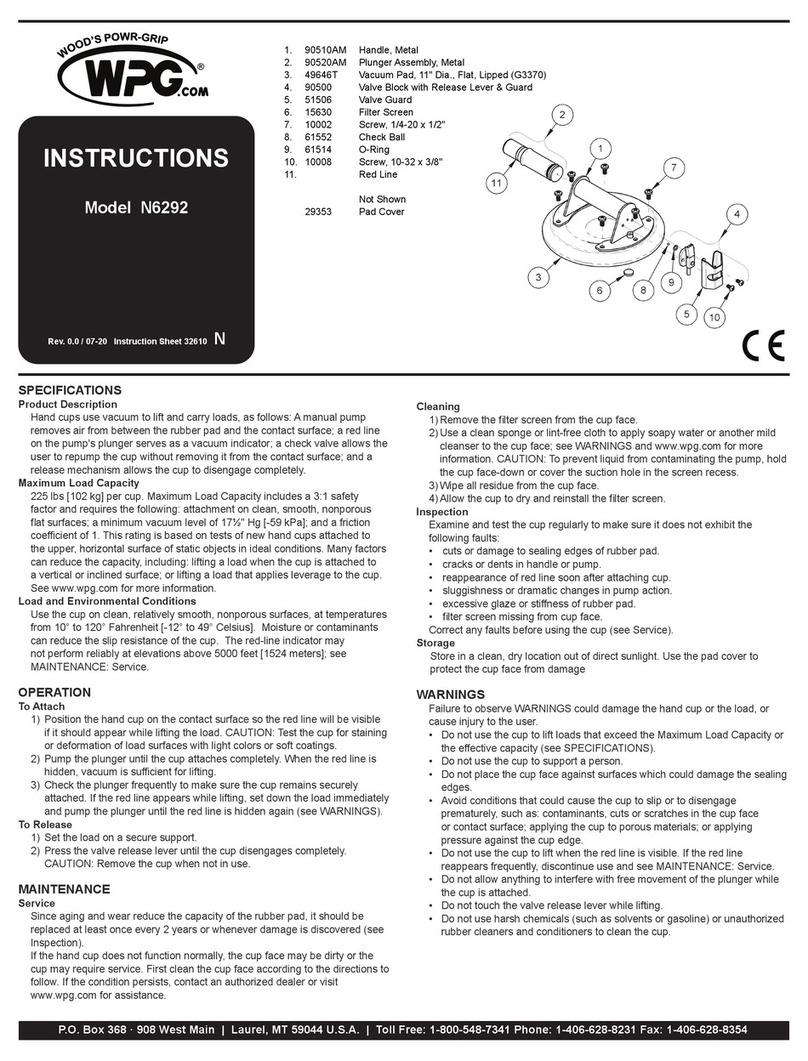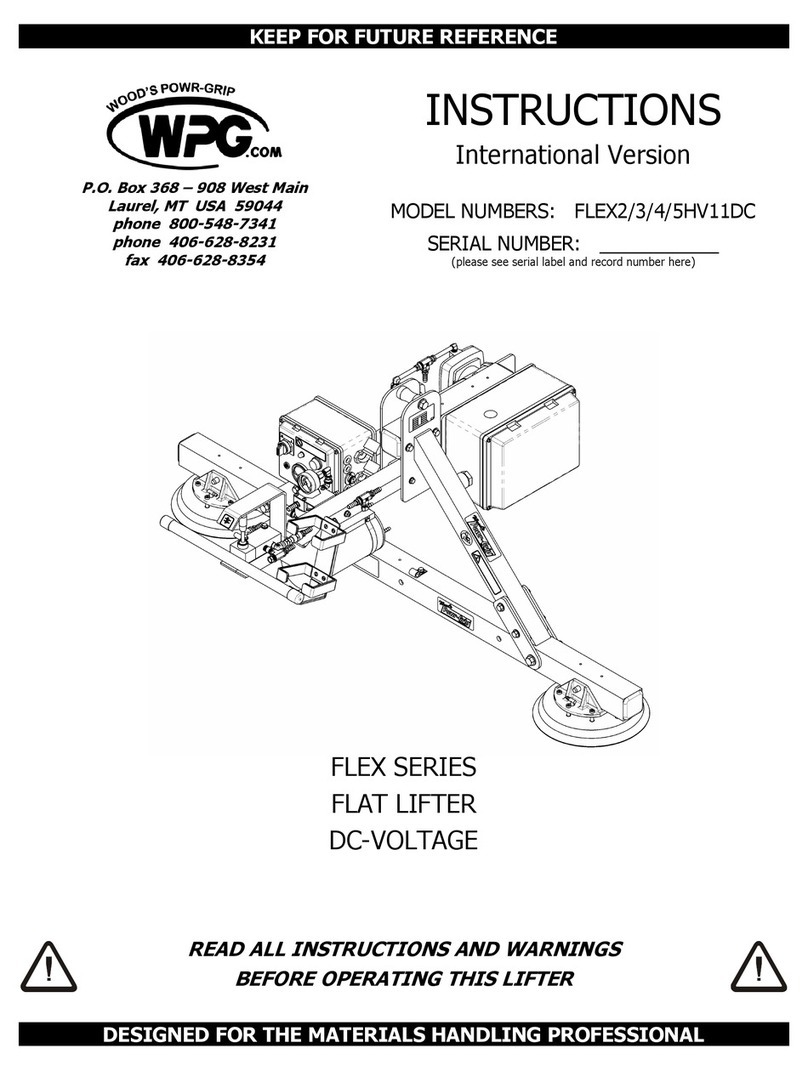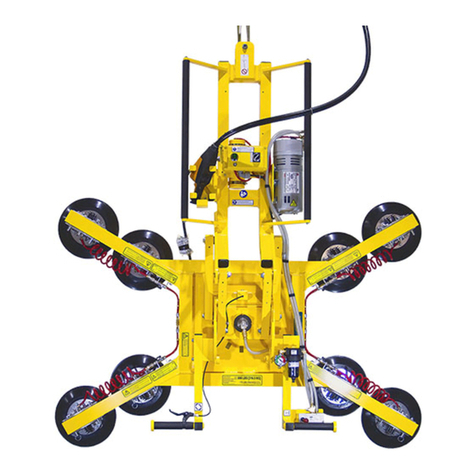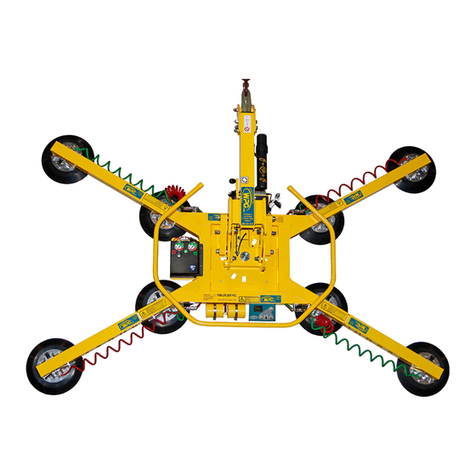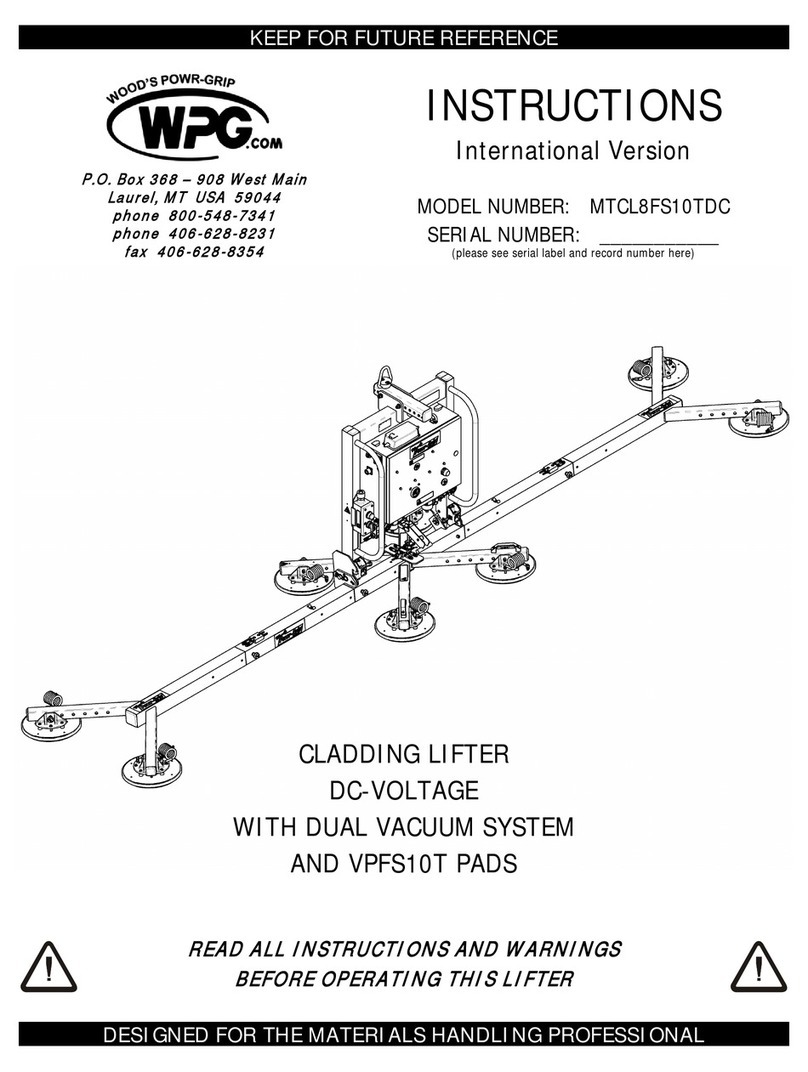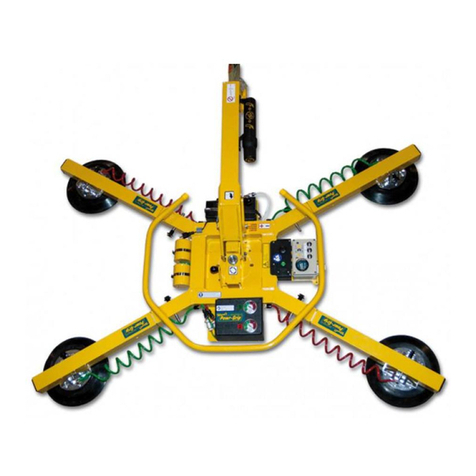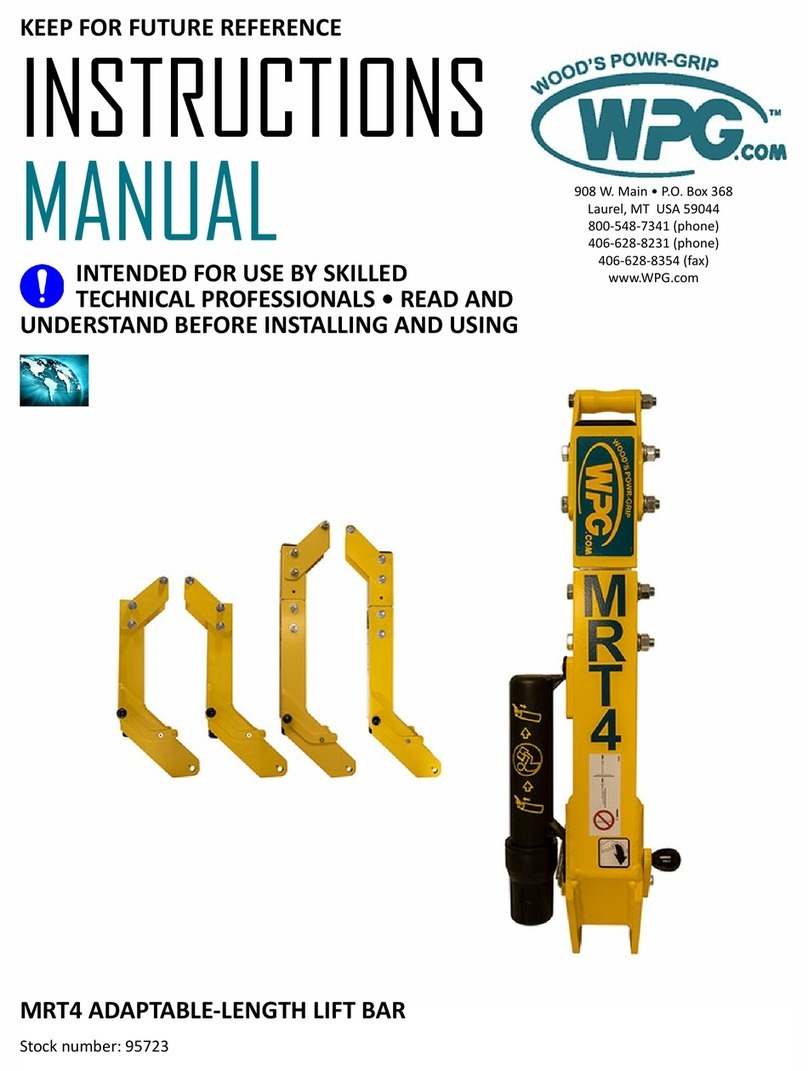
TST-019 MRTALPCH CHANNEL –Rev. 2016-310 Page 1 of 20
SYMPTOMS OF VACUUM LEAK
Severe leakage is evidenced by a lifter’s inability to draw full vacuum while attached to a clean,
smooth, nonporous surface. In such cases, the vacuum pump will run continuously and the vacuum
level shown on the vacuum gauges will be less than 16" Hg [-54 kPa], the red zone of the vacuum
gauge.
Moderate leakage is indicated by intermittent cycling of the vacuum pump during a lift. If the
vacuum generating system turns on more than once every 10 minutes, leakage is serious enough to
warrant repairing the lifter’s vacuum system.
To determine if your lifter has a vacuum leak, perform the Vacuum Test as described in the
Maintenance section of your instruction manual.
When you perform the vacuum test, we recommend that you note the time and leakage rate, such
as “lost 5" Hg [-17 kPa] in 10 minutes”. Note that, if both the blue/green and red circuits of the lifter's
vacuum system are leaking, you should record this information for each circuit. This information can
assist in diagnosing the location of the leak because there may be more than one component
leaking vacuum. For example, when you are performing maintenance, if an isolated section tests
positive for a leak, but the leakage rate is less than that of the whole lifter, this indicates that there is
still one vacuum leak or more elsewhere in the system.
Note: The vacuum test, as described in the instruction manual, is performed with the power switch
in the off ( ) position. However, due to the unique design of this vacuum system, the situation
may arise where, with the power turned on (), the vacuum pump may cycle repeatedly but the
vacuum level, as shown on the vacuum gauges, does not drop, giving no indication of a vacuum
leak.
Due to this, it is recommended that an additional vacuum test be performed with the power switch
on ( ). In this test, if you do not see a drop in vacuum as indicated on either of the vacuum
gauges, but the vacuum pump does cycle more than once in 10 minutes, a specific section of the
vacuum generating system is indicated as being the problem. Review the remaining information in
this section and then proceed to the Vacuum Generating System Test, step 10.
If, when tested in the off ( )position, the vacuum level, as shown on the gauges, does begin and
continue to drop and the rate of leakage, as shown on the vacuum gauge(s), is sufficient to warrant
repair, proceed as follows:
To locate the cause of leakage, begin by inspecting the vacuum pads, fittings and hoses of the
entire vacuum system. Look for contamination, cuts or abrasions on pad faces and cracking at the
suction stem, cracks, abrasions or cuts in hoses, damaged fittings and loose hoses at connection
points. If leakage is severe, the cause is often a visibly damaged part.
Do not apply soapy water to fittings or vacuum hoses in an attempt to find leaks, since it will only be
drawn inside the vacuum system.
If the source of leakage is not immediately evident, the various sections of the entire vacuum system
must be systematically isolated and tested to determine the leakage point. The process to
accomplish this is described in the tests to follow.












